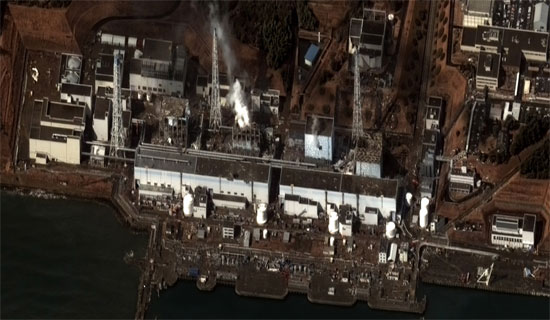Confused in investigating the Fukushima incident
Fukushima Prefecture and Japan's National Radiation Science Institute on June 25 reported miscalculation of 16,118 people in a four-month investigation after the nuclear accident at the Plant. Fukushima 1 electricity in March 2011.

Photo: Blog.skytruth.org
Of the approximately 420,000 people the authorities have completed to date, the re-calculation shows that 12,469 people were exposed to higher doses of radiation while 3,649 were exposed to lower doses than previously calculated.
Errors in the revised calculation of radiation records range from -0.2 to +0.4 milisievert (mSv). As an additional result, some people are identified as being exposed to more than 1mSv, the maximum annual threshold under normal conditions.
The above data is thought to be considered more carefully to provide a more accurate picture of the number of people who have been mistakenly calculated before.
The Institute of Radiation Science was commissioned by Fukushima Medical University to conduct an investigation of 2.05 million people in the province. The institute calculated the risk of radiation using computer programs containing inappropriate date data, which led to a miscalculation of actual radiation for humans. This error has been discovered by studies when updating system data.
- Need to increase disaster prevention after the Fukushima incident
- What causes the Japanese nuclear crisis to be more serious?
- Fukushima is 'artificial disaster'
- Japan concluded the cause of the accident in Fukushima
- The waters near Fukushima are 1,000 times more contaminated
- Fukushima children have 20 times more cancer
- Japan once rejected a proposal to help resolve the US nuclear incident
- The 'millennium' Y2K is about to repeat
- Five lessons from the nuclear accident in Fukushima
- High radiation in underground mud in Fukushima
- The Fukushima disaster caused serious ocean contamination
- Close to the radiation water crisis in Fukushima
 Is the magnetic North Pole shift dangerous to humanity?
Is the magnetic North Pole shift dangerous to humanity? Washington legalizes the recycling of human bodies into fertilizer
Washington legalizes the recycling of human bodies into fertilizer Lightning stone - the mysterious guest
Lightning stone - the mysterious guest Stunned by the mysterious sunset, strange appearance
Stunned by the mysterious sunset, strange appearance